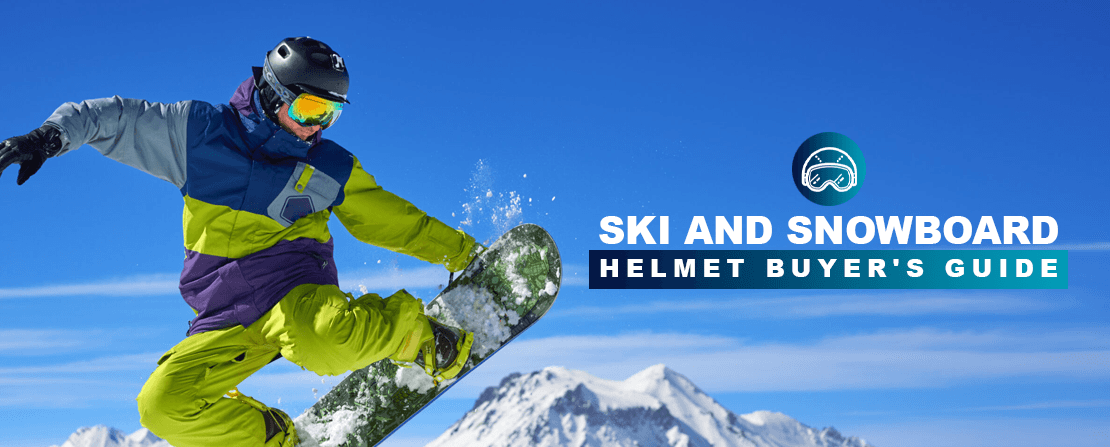 ski helmet buyers guide
ski helmet buyers guide
Ski and Snowboard Helmet Buyer's Guide
Posted
by
Matt Gahman
on Wednesday, March 30, 2022
Everyone knows the safety benefits of wearing a helmet while tearing up the slopes, but what makes a good ski helmet? Lots of details go into choosing a helmet, and knowing how to buy a one involves more than just finding one in your favorite color.
This helmet buyer guide will cover everything from how to size a helmet and how tight a helmet should be to how to pick helmet features that suit your style. Keep reading for all the answers to your hottest helmet questions this snow season.
In this "How To" video we discuss the importance of wearing a helmet and how to properly size a it.
10 Common Ski and Snowboard Helmet Questions and Answers
Whether you're a first-time buyer or a regular on the slopes, these top 10 ski and snowboard helmet FAQs will help you find the best helmet to keep you safe all winter long.
1. Do I Need a Helmet to Ski or Snowboard?
We recommend that everyone wears a helmet while on the mountain. While we think they are the greatest sports on the plant, skiing and snowboarding can also be dangerous. Fast speeds, icy conditions, inexperienced riders, along with other factors can all contribute to accidents. Wearing a helmet can literally save your life.
Though whether helmets are mandatory for skiing or snowboarding depends on each resort's rules and state legislature, widespread helmet use for skiing and snowboarding has increased exponentially in recent years. Between 2005 and 2015, helmet usage jumped from 38% to 78% of skiers across America. As wearing a helmet has become more popular over the last century, severe head injuries from skiing have decreased by about 65%, demonstrating the value of always strapping on a helmet before hitting the slopes.
Helmets make sense for safety during downhill skiing and snowboarding, but do you need a helmet for cross-country skiing? Because there is minimal risk of injury when cross-country skiing, wearing a helmet is not necessarily a requirement while participating in the sport, but it's usually a smart idea to wear one anyway. Despite the terrain being relatively flat, cross-country skiing still involves minor slopes, and you will want to prepare for the unexpected.
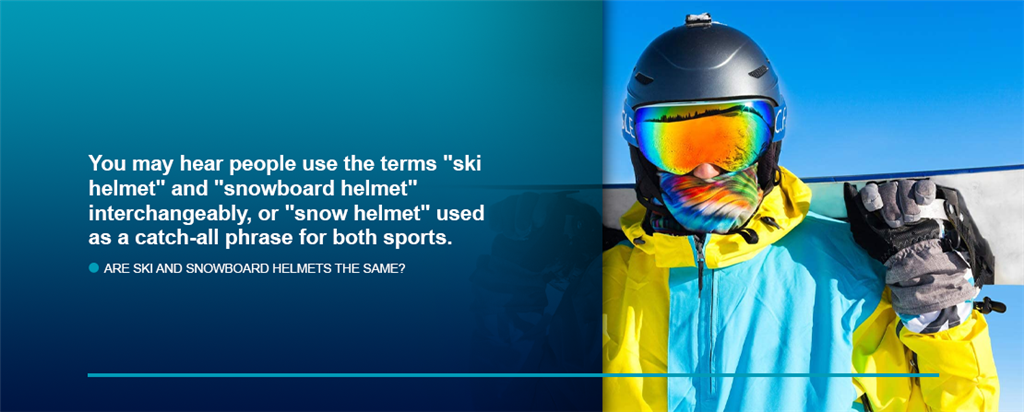
2. Are Ski and Snowboard Helmets the Same?
Because you need a helmet for snowboarding and skiing safety, snowboard and ski helmets are essentially the same. You may hear people use the terms "ski helmet" and "snowboard helmet" interchangeably, or "snow helmet" used as a catch-all phrase for both sports. Similarly, it's safe to wear ski and snowboard helmets for either activity because there are no distinct differences between the two, as far as the risk of injuries goes. When you purchase a snow helmet, you can use it for both skiing and snowboarding.
3. What Is the Safest Ski and Snowboard Helmet?
While there is no one "safest" style, you can look for specific safety features to find the most appropriate helmet for your favorite snow sport. When shopping for a helmet, pay attention to the following safety features.
- Safety certification: There are two main snow helmet safety certifications — the U.S. certification (ASTM F 2040) and the European certification (CE EN 1077). To receive these approvals, a ski helmet must pass a series of tests that involve dropping them from different heights at varying speeds. Make sure you get a snow helmet with at least one, if not both, these certifications.
- Multi-directional impact protection system (MIPS): A MIPS provides extra protection against potential brain injury in the event of an angled fall, rather than a straight-on fall. By using three distinct protective liners, a MIPS helps absorb impact and prevents the brain from moving around in the skull upon impact.
- Visor: Helmets with a visor can offer additional safety on the slopes by eliminating the problem of forgetting your goggles on the slopes. Visors work to protect your eyes through various light conditions while maintaining your field of vision. Because visors fit comfortably over glasses, they may also be a safer ski helmet option than goggles for those who wear prescription glasses on the slopes.
- Ventilation: Helmets use different forms of venting to prevent your head from overheating. Proper snow helmet ventilation draws cool air in through the liner, while warm air exits the vents in the back of the helmet. Some ski helmets have passive ventilation, in which the venting always remains open, or adjustable venting, which allows the wearer to close or open the helmet's venting as needed.
- Shell construction: A helmet's construction and materials determine how the helmet reacts to impact and how much force it can withstand. The outer layer of the helmet is the shell, which typically consists of a protective, high-impact plastic. The inner layer is a foam liner designed to absorb the impact of a fall.
The type of ski helmet shell construction you need may differ depending on your snow activity of choice. More intense winter sports athletes should consider extremely durable snow helmet shells, while those who prefer more leisurely activities like cross-country skiing may lean toward a more lightweight helmet option.
When thinking about your helmet's shell construction, it's essential to be familiar with these main types of shells.
- In-mold shells: In-mold shells have a hard, thin plastic outer layer with an EPS foam interior for shock absorption. While this design is lightweight and protective, it provides less rebound for high-force impacts than other snow helmet styles.
- Hard shells: With hardened plastic glued to a hard foam interior shell, durable hard-shell helmets protect against major head trauma and resist penetration. Though a hard-shell snow helmet's rigid shell does not deform or collapse on itself easily, it can cause a more abrupt stop to the head upon impact.
- Soft shells: Snow helmets with soft shells are more flexible than other helmets, making them a more comfortable option. Their flexible nature also makes soft-shell snow helmets suitable for maximum absorption of minor, low-energy impacts.
- Hybrid shells: A combination of an in-mold shell and a hard shell, hybrid shells have a hardened, thick plastic in vital, high-impact areas, with more flexible materials in low-impact areas. By mixing the best of both worlds, snow helmets with hybrid shells don't have to sacrifice comfort or safety.
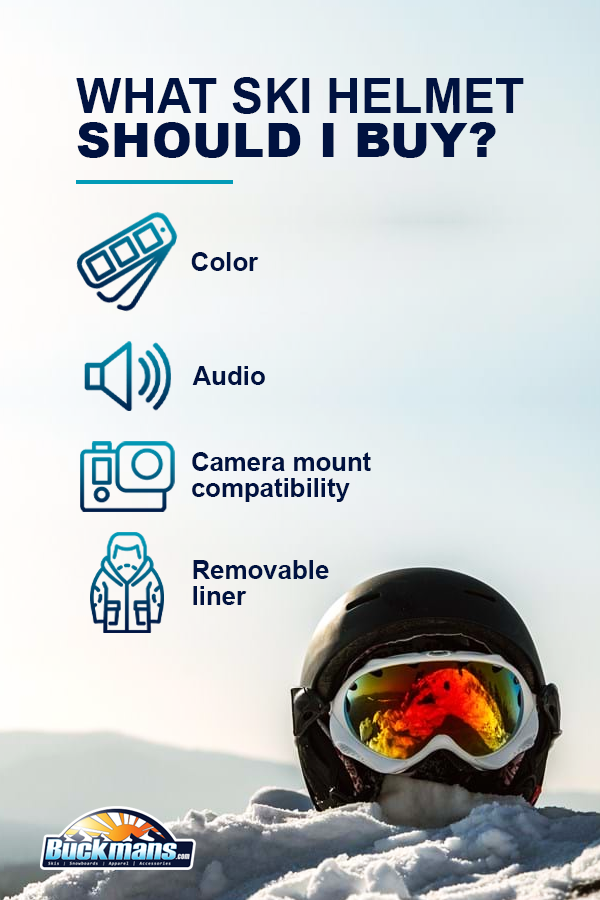
4. What Ski Helmet Should I Buy?
What to look for in a ski helmet depends on a combination of safety and personal preferences. Once you've found a helmet with satisfactory safety features like the ones listed above, you have a few stylistic helmet features to consider before making your final helmet selection. You can personalize your helmet by paying attention to these details.
- Color: Find a helmet with a color that expresses your unique personality. There's no reason you can't look good and stay well-protected while you shred some powder.
- Audio: For music lovers, some helmets have preinstalled sound components with power and volume controls, so you can jam out all the way down the mountain. Other audio-compatible helmets have pockets within the earpads for you to insert your earbuds and connect to your tunes.
- Camera mount compatibility: If you want to capture all your epic trips down the mountain on video, make sure you get a snow helmet that you can easily mount a GoPro camera to.
- Removable liner: Purchasing a snow helmet with a removable liner will make it easier to clean your helmet. When your helmet's liner is removable, you can take it out, wash it and reinsert it to get that new-helmet feeling.
When choosing a snow helmet, you also need to think about brand. The reputations of the best winter sport brands speak for themselves, so do your homework on the different manufacturers. To get you started, here are three of the top makers of ski and snowboard helmets.
- Smith: Already a ski-goggles giant, Smith prides itself on using the latest technology in the industry to manufacture state-of-the-art ski helmets as well. Smith snow helmets are especially well-known for their innovative goggles and helmet integration, revolutionary ventilation technology and exceptional protection features.
- Anon: As a leading brand in performance and aesthetics, Anon knows how to make high-quality snowboard helmets. Anon snow helmets are durable, yet lightweight, resulting in the perfect combination of protection and breathability for active snowboarders and skiers. The adjustable features of Anon helmets also provide wearers a comfortable and safe fit.
- Giro: With a 30-year history of being one of the most reliable brands in winter sports, Giro uses its decades of experience and knowledge to produce protective and modern snow helmets. With MIPS and original designs, Giro ski helmets use cutting-edge technology to deliver top-notch protection in various sizes, colors and styles.
5. What Size Helmet Do I Need?
A ski and snowboard helmet's fit depends on your unique head size and shape, so you shouldn't rely on someone else's sizing to determine yours. Figuring out how to choose a ski and snowboard helmet size can be as straightforward as trying on various helmets at the ski shop until you find one that fits right. Be sure to choose a helmet that fits your head as it is right now, not a helmet that provides you room to grow, as oversized helmets are unsafe.
If you're ordering a helmet from a ski shop online, you'll need a more concrete measurement to help you find your size and correct helmet fit. Learning how to measure for ski helmet size is easy — wrap a tape measure around the largest part of your head, just above the ears and eyebrows, and use that number to help you pick out your helmet. Whichever brand of snow helmet you're looking at will provide a size chart for you to match your measurement with.
6. How Tightly Should a Ski Helmet Fit?
Now that you know how to size a helmet, you need to know how to properly adjust your helmet. For safety purposes, your helmet should fit snug, but not uncomfortably tight. When fitted correctly to your head size, there should not be a gap between the helmet lining and your head or between the top of your snow goggles and the helmet. Most ski and snowboard helmets have these three crucial features of adjustability.
- Sizing mechanism: Both partial and full-adjustability helmet features allow you to manipulate the tightness of your ski helmet to keep it from rolling on your head. By twisting a sizing dial, you can eliminate some of the extra space between your helmet and head.
- Earpads: Removable earpads can fill some extra space within your ski helmet and make it fit more snugly on your head. Switching to thicker earpads could help fine-tune your snow helmet's fit.
- Chinstrap or buckle: Fasten the chinstrap and pull it to the point at which it is tight enough that the snow helmet wouldn't come off on impact, but loose enough that you could chew food without feeling pinched or choked.
Exactly how tight a snowboard helmet should be will vary by head shape and head size. Try doing a shake test by quickly turning your head from side to side to check your ski helmet's fit. If the helmet can rock back and forth on your head, it is too loose. Shrinking the helmet's sizing mechanism, adding earpads and tightening the strap can only go so far — if your snow helmet still moves when you shake your head after adjusting it, try a smaller size.
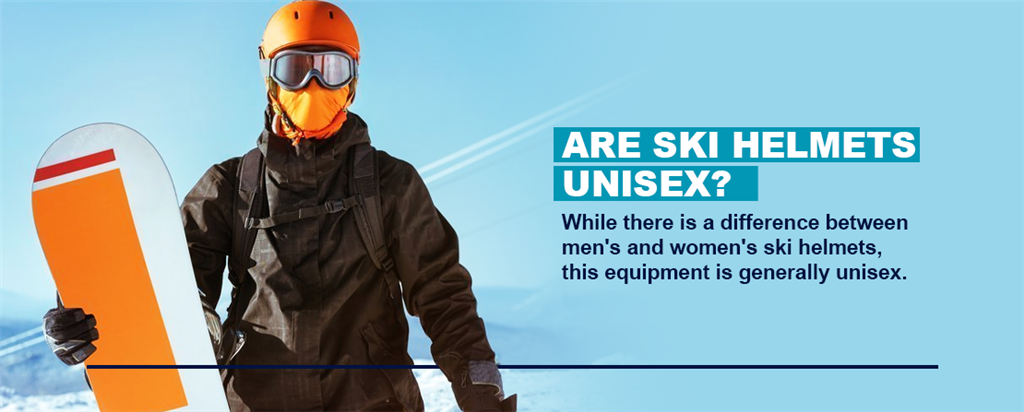
7. Are Ski Helmets Unisex?
While there is a difference between men's and women's helmets, this equipment is generally unisex. Because head size does not tend to vary much by gender, most ski supply stores sell men's snow helmets as unisex snow helmets along with women's helmets and youth helmets, which are slightly smaller. Aside from typically having more feminine colors and patterns on their shell, women's helmets are the same as men's, so you should buy whichever style fits your head best and provides the most protection.
8. How Much Should I Spend on a Ski Helmet?
A high-quality unisex helmet will cost around $100 to $300, with similar prices for women's ski or snowboard helmets. Because they are smaller, the price of a good youth snow helmet usually ranges from $50 to $150. Although a snow helmet is an investment, purchasing a durable snow helmet could spare you from a severe head injury. Aside from quality, some types of snow helmets may vary in price depending on their style and aesthetic appeal. How much you decide to spend for your helmet's exterior to express your personality is up to you, but never sacrifice helmet quality to save a bit of cash.
9. How Long Do Ski Helmets Last?
Depending on their quality, helmets usually last around five years. After the five-year mark, you should consider replacing your snowboarding helmet to ensure you still have as much protection as possible while shredding down the mountain. Of course, you should immediately replace your ski helmet if you damage it in a crash or by dropping it on a hard surface. To keep yourself safe while skiing or snowboarding, regularly inspect your helmet for cracks or other signs of deterioration.
10. Do Ski and Snowboard Shops Offer Rental Packages With Helmets?
The answer to this question varies by ski and snowboard shop or resort, but most ski gear rental packages include only skis, poles and boots, not a helmet. You can still rent a ski helmet for an additional fee. If you frequent the mountain during snow season, you should buy a snow helmet to save yourself some money over time and ensure you always have the proper head protection to ski or snowboard. Besides, owning your ski gear, such as your helmet, is the first step to becoming a true skier or snowboarder.
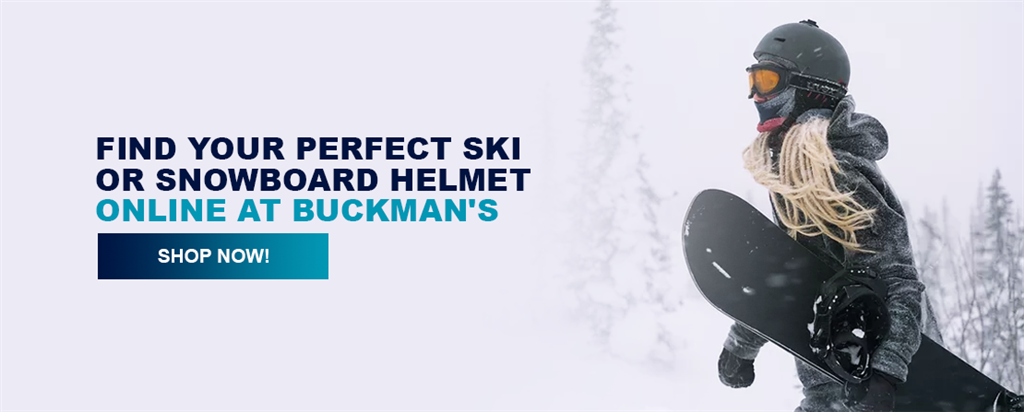
Find Your Perfect Ski or Snowboard Helmet Online at Buckman's
If you're looking for a top-quality skiing or snowboarding helmet, as well as other ski gear, check out the extensive snow helmet selection at Buckmans.com. With helmets manufactured by competitive brands like Smith, Anon and Giro, Buckman's carries only the best of the best. As a family-owned and -operated business, we're like your local mom-and-pop ski shop — online!
At Buckman's, we're winter sports fanatics, so we know the importance of feeling safe out on the slopes. Let us hook you up with the right protective skiing/snowboarding gear to keep you injury-free and smiling on your way down the mountain this snow season. Contact us at Buckman's today to discuss which snow helmet is right for you.
Categories:
Ski equipment
|
Snowboard Equipment
Tagged: ski, snowboard, ski and snowboard equipment, Helmets